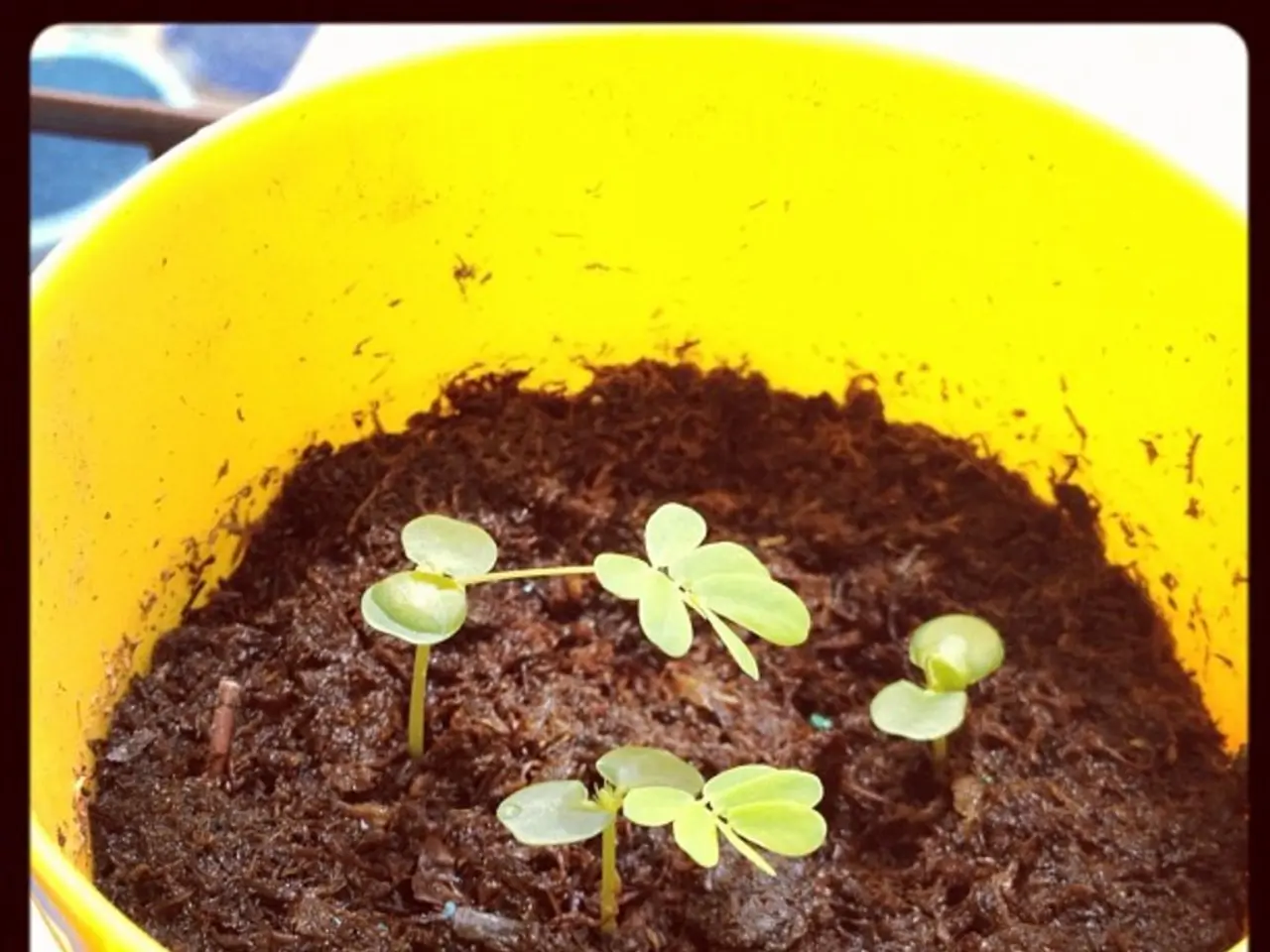Crafting a Sealed Terrarium: A Step-by-Step DIY Tutorial
A closed terrarium is an enclosed miniature ecosystem that mimics the natural world's cycles, providing a self-sustaining habitat for plants and other organisms. Here's a step-by-step guide on how to build your own closed terrarium.
The water cycle, photosynthesis, and respiration are the key processes that maintain balance within a closed terrarium. Water evaporates from the soil and plants, condenses on the glass walls, and drips back down to the soil, recycling moisture without the need for regular watering. Plants absorb light through the glass, use it along with carbon dioxide and water to produce energy, releasing oxygen in the process. This oxygen supports other organisms and keeps the air fresh inside. Aerobic organisms, like bacteria or small invertebrates, use oxygen and release carbon dioxide, which plants then use for photosynthesis, completing the cycle.
To create your own closed terrarium, follow these steps:
1. Choose a clear glass container with a tight seal, such as a jar or bottle, to trap moisture and gases. 2. Add a drainage layer at the bottom, using gravel or small stones, to prevent waterlogging. 3. Incorporate activated charcoal to keep the environment fresh and reduce odours. 4. Add a suitable potting soil for your plants, ensuring there's enough for roots to grow. 5. Plant small plants that thrive in humid, low-airflow environments, such as ferns, mosses, or small tropical plants. 6. Water the soil moderately before sealing to provide initial moisture. 7. Seal the container tightly to create the closed environment. 8. Place the terrarium in indirect sunlight to provide light for photosynthesis without overheating. 9. Monitor the terrarium initially for condensation and plant health, then minimal maintenance is required as the system becomes self-sustaining.
Cacti and succulents are not suitable for closed terrariums as they are native to arid climates and won't thrive in the humid conditions. Instead, opt for a variety of plants that come in various shapes, sizes, and growth habits, categorized into ferns, vines, foliage, moss, and epiphytes.
Acrylic disks cut to size are a good option for terrarium lids, as they can be custom-made to precise dimensions for a reasonable cost. A natural light source should be in a bright spot that's out of direct sunlight. A grow light setup can provide consistent lighting and prevent scorching.
A bioactive terrarium completes the final nutrient cycle by enlisting the help of beneficial terrarium bugs to process dead plants and create nutrients for living ones. Springtails are recommended for every closed terrarium project as they help keep the ecosystem clean and healthy.
When planting, start with the tallest plant to dictate the layout of the land, and use the smallest plants as decorative highlights. It's important to have a mix of all these types of plants to create a natural-looking scene. A clear glass container of uniform shape and reasonable size is needed for a closed terrarium. Air plants can work in a closed terrarium, but they require additional airflow.
Building a closed terrarium is a multi-layered process, similar to building a house. It recreates many of the world's natural cycles, including a miniature rain cycle and, in some cases, a nutrient cycle. The idea is to build a system that can look after itself without much intervention, creating a fascinating and low-maintenance addition to any home.
[1] Terrarium Basics: A Comprehensive Guide to Building a Closed Terrarium. (2021). Retrieved from https://www.terrariumbasics.com/ [2] How to Build a Closed Terrarium. (2020). Retrieved from https://www.instructables.com/ [3] The Ultimate Guide to Building a Closed Terrarium. (2019). Retrieved from https://www.diynatural.com/ [4] Maintaining Your Closed Terrarium. (2020). Retrieved from https://www.hunker.com/ [5] The Complete Guide to Building a Closed Terrarium. (2021). Retrieved from https://www.apartmenttherapy.com/
- Maintaining a closed terrarium requires minimal effort, as it operates on self-sustaining water, carbon dioxide, and oxygen cycles.
- Closed terrarium care is an excellent addition to one's lifestyle, offering an opportunity for personal growth and self-development.
- When it comes to fashion-and-beauty, a closed terrarium can serve as a unique and exotic decorative piece, adding an organic element to any home-and-garden setting.
- In the realm of relationships, tending to a shared closed terrarium could foster a sense of shared responsibility and strengthen bonds.
- For families with pets, a closed terrarium can be a safe and low-maintenance hobby, allowing children to learn about plants, animals, and ecosystems.
- Planning a trip or exploring new places could intrigue many travelers, providing opportunities to visit interesting terraria exhibits around the world and further expand learning in different spheres, such as food-and-drink, cars, education-and-self-development, and shopping.





